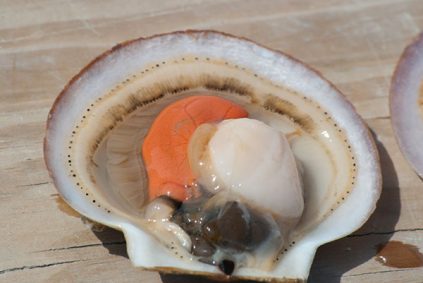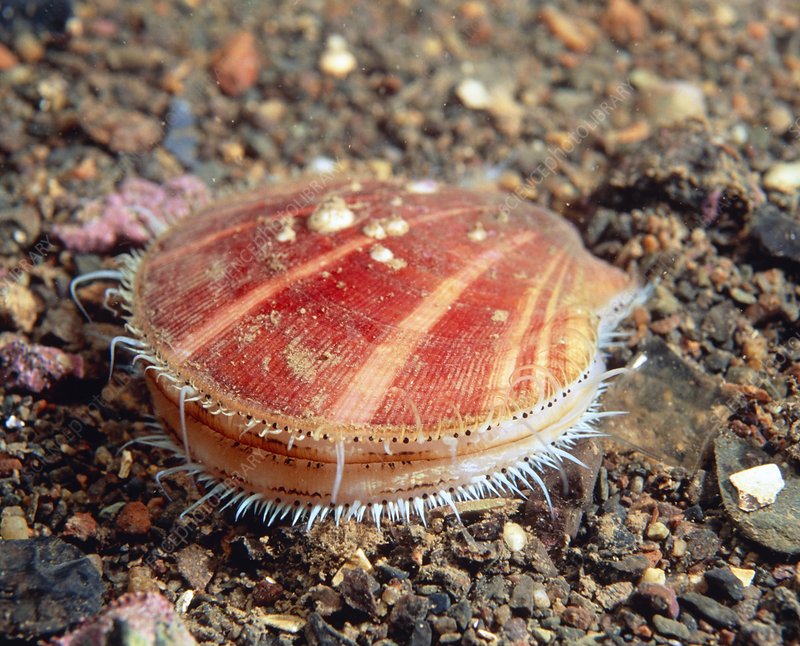

Common names for Scallop, bay scallop
Cape Cod, Cape, Long Island or Peconic scallop, China bay
Other languages for Scallop, bay scallop
- French name: Pecten
- Italian name: Ventaglio
- German name: Kammuschel
Introduction to Scallop, bay scallop
Bay scallops, a smaller relative of sea scallops, contain between 70 to 100 meats per pound. They are processed onshore after being dredged, raked, or tonged from bays, ports, and salt ponds throughout the East Coast, from Atlantic Canada to North Carolina. They are also grown in suspended systems in Nova Scotia and New England. China imports a less costly farmed bay scallop. Though entire, live scallops have a niche market in the United States, the product usually seen on the market is just a portion of the complete animal; the intestines are removed and discarded, leaving only the adductor muscle, which contains the edible flesh. The meats are offered „wet“ (soaked in a preservative such as tripolyphosphate, which whitens the scallops and prolongs their shelf life) or „dry“ (untreated). Scallops that have been oversoaked will seem unnaturally glossy, opaque, and flabby, and will have a soapy sensation and flavor. Additionally, they will leak more liquid and contract more when cooked.
Product profile for Scallop, bay scallop
Bay scallops are the mildest and sweetest of the scallop species, and are regarded the best-tasting. The lean, cork-shaped meat is transparent when raw, with a creamy to pink hue. The consistency should be solid and wet, rather than slick and spongy. Meat that has been cooked is opaque white and firm. Scallops of superior quality should have an ivory translucence and an elastic springiness that allows them to maintain their form. Fresh bay scallops have a pleasant, seaweedy aroma. They shouldn’t be in the water at all. Scallops with a sour scent, especially those with iodine overtones, should be avoided.
Cooking tips for Scallop, bay scallop
Scallops from the bay are tiny and cook fast. While most people eat scallops cooked, bays are occasionally eaten raw due to their size and freshness. Consumers in high-risk groups, on the other hand, should avoid any raw shellfish. To make scallop ceviche, „cook“ the delicate meats in lemon or lime juice. To use in salads, steam gently. Don’t overcook the scallops; they’ll become tough and flavorless if you do. When the exterior of the meat becomes opaque, it’s done.
Nutrition facts for Scallop, bay scallop
Calories: 87 Fat Calories: 7 Total Fat: 0.8 g Saturated Fat: 0.8 g Cholesterol: 33 mg Sodium: 161 mg Protein: 16.8 g Omega 3: 0.2 g
Primary product forms for Scallop, bay scallop
Live Fresh: Meats Frozen: Meats (IQF), Blocks Value-added: Smoked meats, Breaded/battered (frozen), Entrées (frozen)
Global supply for Scallop, bay scallop
Canada, China, United States, Iran